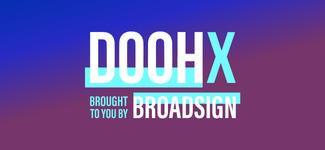Across the entire digital out-of-home industry, there’s one term that keeps coming up over and over again: programmatic DOOH. From more players entering the space to a rise in omnichannel media plans, there’s a lot going on in the world of pDOOH – and it’s showing no signs of slowing down.
We recently spoke with an exciting panel of industry experts, in collaboration with doohx, to get a global perspective on some of the key trends we’re seeing.
Meet our panellists:
What’s the current state of pDOOH in your market?
Our panellists agree that a big uptick in programmatic trading comes with a need for more education in the space. “In the last 3-4 years, the U.S. market has really dove into programmatic,” says Ian. “As we began to educate buyers, brands, and omnichannel markets, we found that there was a lot of confusion on what is automation and what is programmatic.”
For Hannah at UK-based Scoota, the past few years have been spent looking at how they can educate clients in moving away from a display mentality and incorporating OOH into their traditional campaigns.
Alexie agrees that more education is needed for various stakeholders in the OOH industry, from publishers and DSPs to agencies and brands. With more education, these technology players will be able to answer questions like:
- Do publishers understand how to use programmatic as a revenue channel, and how they can incorporate it into their direct sales efforts?
- Are DSPs equipped to understand and articulate the differences in OOH compared to other traditional channels, and how can they navigate conversations with agency stakeholders?
- Are agencies and brands understanding the benefits of pDOOH and how to incorporate it into their larger programmatic strategies?
What are some future trends and opportunities that you expect we’ll see in the year ahead?
Our panellists predict that we’ll be seeing a rise in pDOOH trading as part of omnichannel strategies in the year ahead, with many omnichannel DSPs having already entered the space over the past few years. “When you combine their inertia with the next wave of new omnichannel DSPs entering the space, I expect there to be a great buzz for programmatic OOH in the industry,” says Alexie.
According to Dorota, efficiency and optimization are key factors contributing to the success of programmatic in Germany. “The OOH market has made big progress globally, and one of the first milestones is more digitization. More and more screens are becoming digitized with many media owners investing heavily in this.” This digitization is going hand in hand with the acceleration of programmatic in the European market.
For Hannah, now that clients have a more widespread base knowledge of programmatic OOH, the focus can shift towards innovation and cross-channel plans. “Programmatic OOH won’t be the exact same as [our clients’] display advertising. It doesn’t translate like for like, but you can still run campaigns in the same platform and split that budget across different channels.”
In the U.S. market, Ian tells us that a lot of the success of the medium can be attributed to its reach and frequency. Check out what he has to say:
How are agencies managing the internal structure and ownership of pDOOH vs. their online programmatic or outdoor-specific teams?
For Alexie, this all depends on the brand and agency on how they take direction from clients.
With limited standards of DOOH, how can ad tech, ad server, or measurement platforms prepare to support pDOOH?
“It’s really about ensuring that the tech partners, alongside agency stakeholders and publishers, push for standardization,” says Alexie. “One challenge we have is the fragmentation of ad sizes. This is a barrier for brands who are trying not to spend a lot of money on producing tons of sizes. Stakeholders need to work together for data, creative sizes, etc.”
Ian agrees that there have been significant strides in the adoption of pDOOH from both publishers and DSPs. “We’ve also made some significant strides in things like latency. When I bid and buy, I want to have real-time bidding. I want to know that when I bid on an ad, it’s displayed. Those are the standards that are beginning to come together in the US.”
How does planning for effective reach and frequency differ from pDOOH and traditional OOH, and what must the planner consider?
According to Dorota, context, audiences, and targeting are everything. When it comes to traditional OOH, buyers aren’t always able to select the certain screens that they’d like, typically buying networks instead. These networks are part of a larger group of frames distributed across a whole city, representing some general target audience group. In terms of driving reach and frequency, Share of Voice, or the percentage of time an ad is displayed within a loop, is important to consider.
Where should those new to pDOOH begin, and why is gaining knowledge around the evolution of DOOH so vital for businesses?
“I would advise people just getting into the space to start simple,” says Hannah. “Get a good base understanding of what you’re trying to do and what success would look like from there and then gradually start to build out a strategy and plan.” Alexie adds that it’s important for brands to understand the ‘why’. For most brands, pDOOH helps improve their digital campaign performance, and including OOH is a great accelerant for other digital campaigns.
How can we encourage programmatic spend in smaller or new markets?
When trying to open up programmatic trading in a new market, Hannah tells us that it’s important to first understand if there are any barriers that are preventing players from entering the market.
A look at doohx’s new certification course, PDOOH Advanced
There are many areas of pDOOH that experts are predicting will evolve over the next few years. In the latest certification course from doohx, Head of Insight Brooke Ermogenis, along with industry experts from around the world, dig deeper into the exciting technology advancements that we’re seeing.
Topics include:
- Inventory management and yield optimization
- Internal campaigns
- Maintaining prices and deal strategies
- pDOOH campaign planning and integrations
… and much more!
You can learn more about the course here.
A huge thanks to our panellists and moderator!
Want to check out the whole conversation? Click here to view the full recording.





